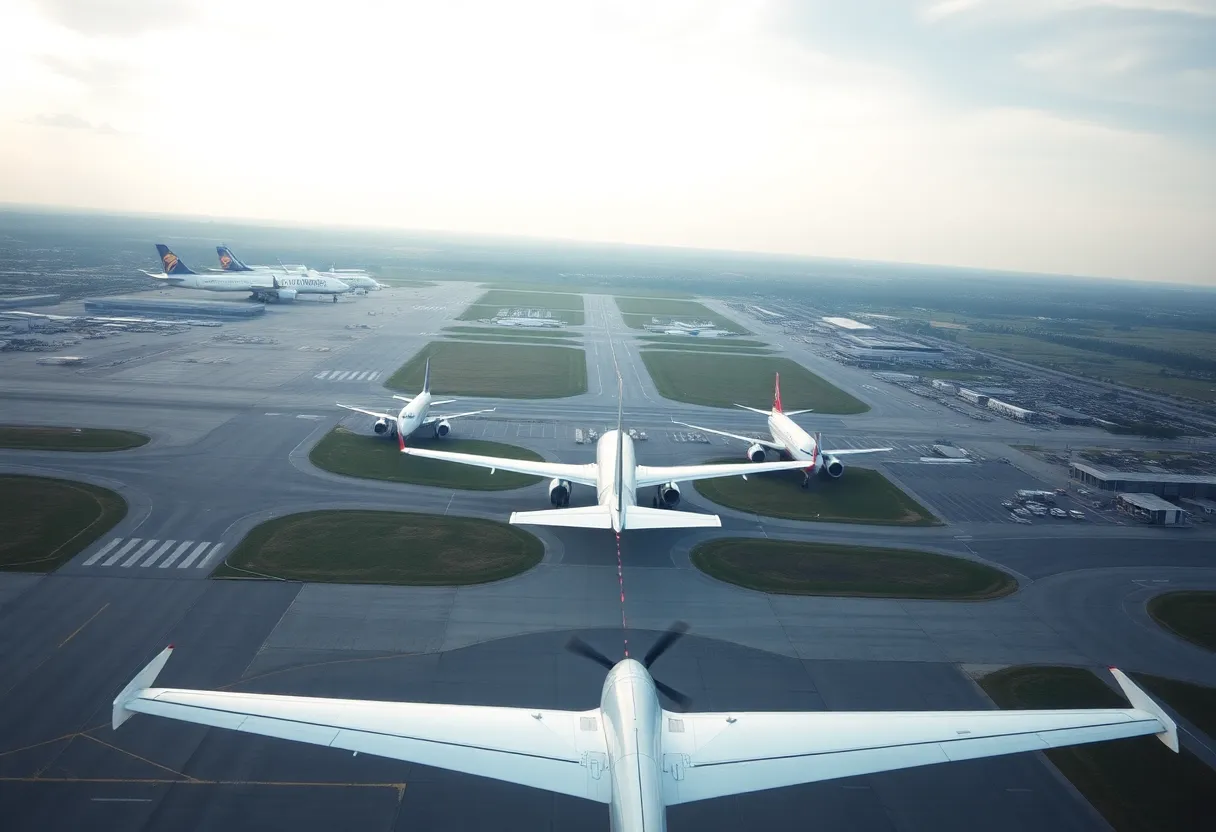

Illustration of a near miss incident in aviation safety.
Want to target the right audience? Sponsor our site and choose your specific industry to connect with a relevant audience.
Prominent brand mentions across targeted, industry-focused articles
High-visibility placements that speak directly to an engaged local audience
Guaranteed coverage that maximizes exposure and reinforces your brand presence
Interested in seeing what sponsored content looks like on our platform?
May’s Roofing & Contracting
Forwal Construction
NSC Clips
Real Internet Sales
Suited
Florida4Golf
Click the button below to sponsor our articles:
Sponsor Our ArticlesOn Friday afternoon, Delta Flight 2983 had a near miss with a U.S. Air Force T-38 jet shortly after takeoff from Ronald Reagan Washington National Airport. Thanks to the aircraft’s Traffic Alert and Collision Avoidance System (TCAS) and quick actions by air traffic controllers, the two planes managed to avoid a disaster. The incident has sparked renewed discussions about aviation safety and the need for stricter regulations around the D.C. airspace.
On Friday afternoon, travelers at Ronald Reagan Washington National Airport got a reminder of how crucial safety is in aviation. The Delta Air Lines **Flight 2983**, an Airbus A319, had a **near miss** with a U.S. Air Force T-38 jet shortly after taking off at around **3:15 p.m. ET**. The flight was heading to **Minneapolis-St. Paul International Airport**, and passengers were eager to reach their destination when an unexpected incident occurred.
As Delta Flight 2983 ascended into the sky, it suddenly encountered a **T-38 Talon** jet from the U.S. Air Force, which was part of a group of four planes heading to Arlington National Cemetery for a special flyover. Reports indicate that the military jet was flying at approximately **800 feet** while traveling over **350 miles per hour**. It was a situation that could have turned frightening in an instant!
Fortunately, the Delta aircraft was equipped with a **Traffic Alert and Collision Avoidance System (TCAS)**, which promptly issued a **”resolution advisory”** to the pilots. This alert nudged them to take **evasive action** as they rapidly approached the military jet. Meanwhile, air traffic controllers sprang into action, providing crucial instructions to both the Delta flight and the Air Force jet, helping to avert what could have been a serious disaster.
Following the close call, the Delta pilot checked in with air traffic control to confirm that there had indeed been another aircraft flying about **500 feet below them**. The flight was carrying **131 passengers**, in addition to two pilots and three flight attendants, all of whom were understandably shaken but unharmed after the incident.
In light of the close call, Delta’s spokesperson emphasized that nothing is more important than the **safety** of its customers. The airline’s crew reportedly followed all the necessary **standard procedures** in response to the TCAS alert, ensuring that everyone onboard was kept safe during what could have been a very scary moment.
This incident raised flags not just for those involved but also for the aviation community as a whole. Just months earlier, a tragic accident occurred on January 29, when an **American Airlines regional jet** collided with an **Army Black Hawk helicopter**, leading to the loss of **67 lives**. The National Transportation Safety Board (NTSB) has reported more than **15,000 close proximity events** involving commercial aircraft and helicopters in the D.C. airspace between 2021 and 2024.
With the recent close call, pressure is mounting on Congress and aviation regulators to implement stricter **safety measures** around DCA. The Federal Aviation Administration (FAA) had previously taken steps to close a helicopter route in the vicinity and mandated that military aircraft operating near the airport utilize specific **collision avoidance equipment**. However, this near miss has demonstrated that *even with these precautions in place, challenges still exist*.
Authorities are currently investigating the incident fully to understand how this near disaster occurred. As we continue to embrace air travel, it’s stories like these that remind us how vital it is to keep improving and prioritizing safety measures to protect everyone in the skies.
While Delta Flight 2983 passengers are grateful to be safely en route, their experience serves as a stark reminder of the complexities of aviation safety. Here’s hoping that such close calls can continue to be minimized in the future!
News Summary On March 29, 2025, Bowling Green mourned the loss of Annie Elizabeth 'Sis'…
News Summary The Bowling Green community is reeling from the recent indictments following the tragic…
News Summary With severe weather on the horizon, the Warren County Emergency Management Agency has…
News Summary In a vibrant expression of faith, around 70 students at Western Kentucky University…
News Summary Bowling Green is set for significant transportation improvements, including a new roundabout and…
News Summary In a strange incident early Sunday morning, a man stole an ambulance in…